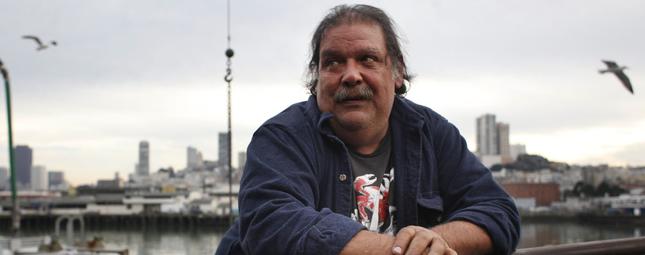Pacific species migrating through warmer Northwest Passage to the Atlantic
SEAFOOD.COM NEWS [National Post] By Tristin Hopper – March 20, 2013 –
Set loose by an ice-free Northwest Passage, an invasion force of Pacific sea creatures is moving east to Atlantic waters.
Researchers at the U.K.- based Sir Alister Hardy Foundation for Ocean Science have called the discovery of a microscopic west coast plant on the east coast a “harbinger of an inundation of the North Atlantic with foreign organisms.”
“The Arctic is getting easier to navigate … organisms that don’t even swim are getting through,” says Eric Solomon, director of conservation strategy at the Vancouver Aquarium.
This week, British researchers announced that the plant, extinct along the East Coast for more than 800,000 years, has begun to reappear there after migrating through the Arctic Ocean. It marks the first time an organism has completed a trans-Arctic crossing in modern times without a set of fins.
Last summer, European scientists were baffled when a grey whale appeared appeared off Israel – the first time a grey whale had been spotted in Mediterranean waters since it was hunted to extinction in the 1700s. At the time, researchers speculated that the Pacific Ocean whale had made its way east through the ice-free Northwest Passage and “was now wondering where the hell it is.”
Killer whales have been capitalizing on the melting Arctic since at least 2007. Faster and smarter than the North’s large, lumbering sea creatures, killer whales have been enjoying free reign over Arctic populations of narwhals, belugas and seals. Packs of killer whales have also been seen taking down bowhead whales twice their size. Wary of the ferocious newcomers, bowhead whales, narwhal and beluga have all been spotted staying near shore and swimming in unnaturally tight formations.
The Humboldt squid, a creature once seen only off the South American coast, has gradually worked its way north into ice-filled waters off Alaska. Soon, researchers suspect, the 45 kilogram squid could begin charting its own cross-Arctic trip.
“It used to be that the primary consideration for staying alive in the Arctic was being able to breathe through a hole in the ice, and that’s not going to be true anymore,” says Ron O’Dor, global scientific director with the Halifaxbased Ocean Tracking Network.
The Ocean Tracking Network, headquartered at Dalhousie University, is deploying millions of dollars of equipment to the High Arctic to track the west-east migrations. “There’s going to be some reshuffling of the ecosystems,” says Mr. O’Dor. “Whether that’s good for humans or bad for humans is yet to be determined.”
The invasion is already bad news for Newfoundland’s Atlantic cod. They are “facing a potentially mutating ecosystem with the arrival of these different species,” says Julian Dodson, a marine biologist at the University of Laval. He notes Arctic char are already facing tough competition for food by schools of east-moving capelin, a small forage fish.
As Arctic shipping traffic ramps up, the migration of sea life will only increase as crustaceans and plankton hitch rides east on Europe-bound freighters. Following the construction of the Suez Canal, says Mr. D’Or, the Mediterranean Sea became overcome with invasive species swimming over from the Red Sea. “The Arctic is going to turn into a giant Suez Canal,” he says. Species used to move freely between the Atlantic and Pacific, but they were isolated by the introduction of polar ice. Pacific and Atlantic counterparts are now poised for their first meeting in several million years. Pacific salmon have begun cropping up off the Arctic coast of Alaska, and Atlantic salmon are appearing near Iqaluit. It is “inevitable” the two species will eventually collide, says Mr. O’Dor.
Coincidentally, many of these east-west encounters will occur in the waters surrounding Newfoundland and Labrador. One thousand years ago, the area hosted a different kind of east-west reunion when European explorers first encountered North American aboriginals in L’Anse aux Meadows, Newfoundland.
Ken Coons
Seafood.com News 1-781-861-1441
Email comments to kencoons@seafood.com
Copyright © 2013 Seafoodnews.com
Source: Seafood.com News


